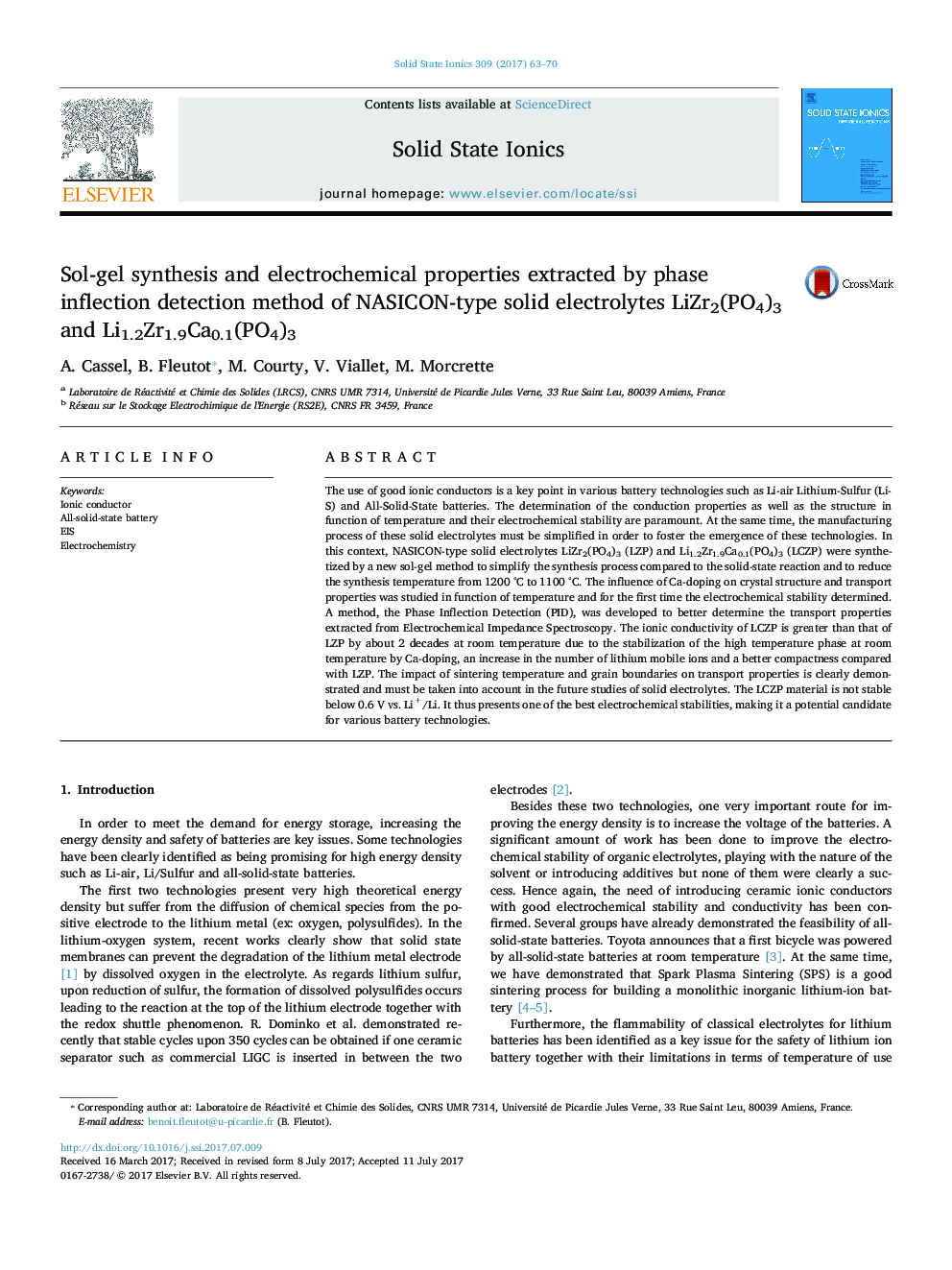| کد مقاله | کد نشریه | سال انتشار | مقاله انگلیسی | نسخه تمام متن |
|---|---|---|---|---|
| 5150332 | 1498234 | 2017 | 8 صفحه PDF | دانلود رایگان |
عنوان انگلیسی مقاله ISI
Sol-gel synthesis and electrochemical properties extracted by phase inflection detection method of NASICON-type solid electrolytes LiZr2(PO4)3 and Li1.2Zr1.9Ca0.1(PO4)3
دانلود مقاله + سفارش ترجمه
دانلود مقاله ISI انگلیسی
رایگان برای ایرانیان
کلمات کلیدی
موضوعات مرتبط
مهندسی و علوم پایه
شیمی
الکتروشیمی
پیش نمایش صفحه اول مقاله

چکیده انگلیسی
The use of good ionic conductors is a key point in various battery technologies such as Li-air Lithium-Sulfur (Li-S) and All-Solid-State batteries. The determination of the conduction properties as well as the structure in function of temperature and their electrochemical stability are paramount. At the same time, the manufacturing process of these solid electrolytes must be simplified in order to foster the emergence of these technologies. In this context, NASICON-type solid electrolytes LiZr2(PO4)3 (LZP) and Li1.2Zr1.9Ca0.1(PO4)3 (LCZP) were synthetized by a new sol-gel method to simplify the synthesis process compared to the solid-state reaction and to reduce the synthesis temperature from 1200 °C to 1100 °C. The influence of Ca-doping on crystal structure and transport properties was studied in function of temperature and for the first time the electrochemical stability determined. A method, the Phase Inflection Detection (PID), was developed to better determine the transport properties extracted from Electrochemical Impedance Spectroscopy. The ionic conductivity of LCZP is greater than that of LZP by about 2 decades at room temperature due to the stabilization of the high temperature phase at room temperature by Ca-doping, an increase in the number of lithium mobile ions and a better compactness compared with LZP. The impact of sintering temperature and grain boundaries on transport properties is clearly demonstrated and must be taken into account in the future studies of solid electrolytes. The LCZP material is not stable below 0.6 V vs. Li+/Li. It thus presents one of the best electrochemical stabilities, making it a potential candidate for various battery technologies.
ناشر
Database: Elsevier - ScienceDirect (ساینس دایرکت)
Journal: Solid State Ionics - Volume 309, 15 October 2017, Pages 63-70
Journal: Solid State Ionics - Volume 309, 15 October 2017, Pages 63-70
نویسندگان
A. Cassel, B. Fleutot, M. Courty, V. Viallet, M. Morcrette,